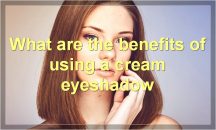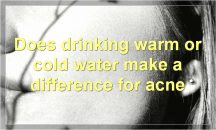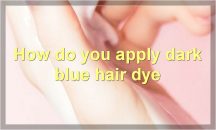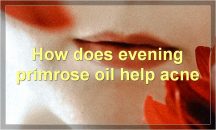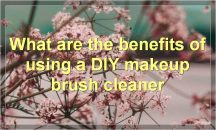If you’re one of the many people suffering from fungal acne, you’re probably wondering what it is, how to get rid of it, and how to prevent it from coming back. Here’s everything you need to know about fungal acne.
What is fungal acne and how does it differ from regular acne
What is fungal acne and how does it differ from regular acne?
Fungal acne is a skin condition that is characterized by the presence of small, red bumps on the skin. These bumps are often itchy and can be accompanied by flaking and dryness. Fungal acne is most commonly seen on the face, back, and chest.
Regular acne is caused by a build-up of oil and dead skin cells in the pores. This can be due to hormonal changes, diet, or hygiene habits. Fungal acne is caused by an overgrowth of yeast on the skin. This can be due to warm, humid weather, tight clothing, or using an oily or heavy moisturizer.
Fungal acne can be treated with anti-fungal medications prescribed by a doctor. Regular acne can be treated with over-the-counter medications, such as benzoyl peroxide or salicylic acid.
What are the symptoms of fungal acne
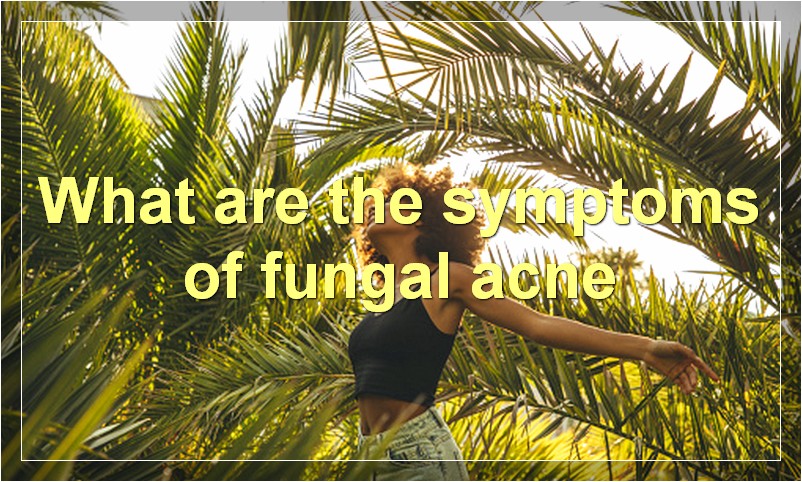
Fungal acne is a condition that results from an overgrowth of yeast on the skin. The most common symptoms of fungal acne include redness, itching, and scaling of the skin. In some cases, the condition can also cause pimples or pustules. Fungal acne is most often seen in people who are overweight or have diabetes.
What causes fungal acne
Fungal acne is a condition caused by an overgrowth of yeast on the skin. This overgrowth can cause inflammation and redness, as well as a build-up of dead skin cells, which can lead to clogged pores and breakouts. There are many factors that can contribute to the development of fungal acne, including:
• Humidity: Yeast thrives in warm, moist environments, so hot, humid weather can be a trigger for fungal acne.
• Sweating: Sweating also creates a warm, moist environment on the skin, which can lead to an overgrowth of yeast.
• Tight clothing: Wearing tight clothing (such as workout gear or swimwear) can trap sweat and moisture against the skin, promoting the growth of yeast.
• Antibiotics: Antibiotics can kill off good bacteria that normally keep yeast in check, leading to an overgrowth.
If you think you may have fungal acne, it’s important to see a dermatologist for treatment. Treatment options include antifungal creams or oral medications.
How can fungal acne be treated
Acne is a very common skin condition that affects millions of people around the world. Although acne is most commonly associated with teenagers, it can affect people of any age. Acne occurs when the pores of the skin become blocked with sebum, a type of oil produced by the body. When these pores become blocked, bacteria can grow and cause inflammation.
There are many different treatments for acne, including over-the-counter medications, prescription medications, and home remedies. One home remedy that may be effective in treating acne is vinegar. Vinegar has antibacterial and antifungal properties that can help to kill the bacteria that cause acne.
To use vinegar as a treatment for acne, soak a clean cotton ball in vinegar and apply it to the affected area. Leave it on for about 15 minutes and then rinse it off with warm water. Repeat this process two or three times a week until the acne clears up.
If you don’t have vinegar, you can also try using lemon juice. Lemon juice also has antibacterial and antifungal properties. To use lemon juice as a treatment for acne, apply it to the affected area with a cotton ball and leave it on for about 15 minutes. Rinse it off with warm water and repeat this process two or three times a week.
There are many other home remedies that can be used to treat acne. Some other popular home remedies include aloe vera gel, honey, and cucumber slices. Experiment with different home remedies to see which one works best for you.
What are some home remedies for fungal acne
Fungal acne is a common skin condition that can be treated with a variety of home remedies. Some of the most effective home remedies for fungal acne include:
1. Tea tree oil: Tea tree oil has antifungal and antibacterial properties that make it an effective treatment for fungal acne. Simply apply a few drops of tea tree oil to the affected area twice daily.
2. Apple cider vinegar: Apple cider vinegar also has antifungal and antibacterial properties, making it another effective treatment for fungal acne. Simply apply a cotton ball soaked in apple cider vinegar to the affected area twice daily.
3. Aloe vera: Aloe vera is a natural remedy that can help to soothe and heal the skin. Simply apply a thin layer of aloe vera gel to the affected area three times daily.
4. Oregano oil: Oregano oil is another natural remedy with antifungal properties. Simply add a few drops of oregano oil to a cotton ball and apply it to the affected area two times daily.
5. Garlic: Garlic is a natural remedy that has both antifungal and antibiotic properties. Simply apply a crushed garlic clove to the affected area two times daily.
6. Yogurt: Yogurt contains live bacteria that can help to fight the fungus that causes fungal acne. Simply apply a thin layer of plain yogurt to the affected area two times daily.
Will fungal acne go away on its own
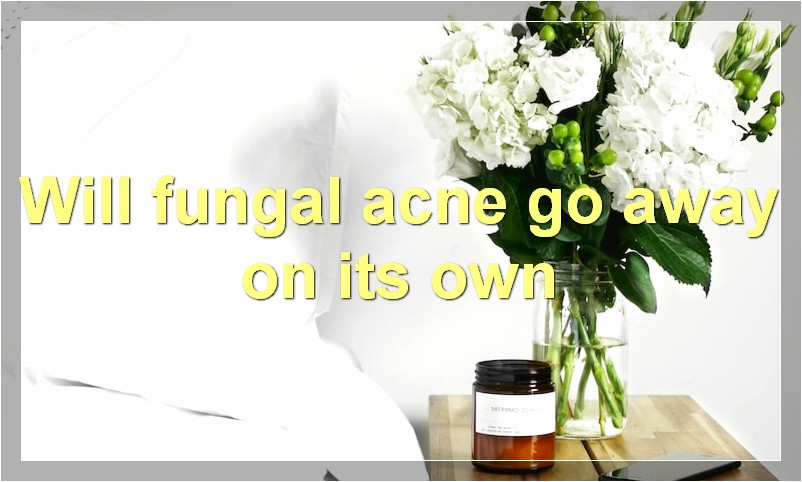
Fungal acne is a skin condition that is caused by an overgrowth of yeast on the skin. The overgrowth of yeast can be caused by a number of factors, including a weakened immune system, humid weather, and a lack of hygiene. Fungal acne can appear as red, scaly patches on the skin that are often itchy and uncomfortable. If left untreated, fungal acne can lead to serious skin infections.
Fortunately, there are a number of treatments available for fungal acne. Over-the-counter antifungal creams and powders can be effective in treating mild cases of fungal acne. For more severe cases, your doctor may prescribe oral antifungal medication. In some cases, light therapy may also be recommended.
With treatment, fungal acne usually clears up within a few weeks. However, it is important to continue using the prescribed treatment even after the acne has cleared to prevent the fungus from coming back. Additionally, good hygiene practices should be followed to help prevent the overgrowth of yeast on the skin.
How can I prevent fungal acne from happening
Acne is a common skin condition that can be caused by a variety of factors, including hormones, bacteria, and inflammation. While there are many over-the-counter and prescription treatments available, some people may prefer to try natural remedies.
Fungal acne is a type of acne that is caused by a yeast infection. It can occur on the face, back, chest, and other areas of the body. Symptoms include redness, itching, and scaling. Treatment options include antifungal creams and lotions.
There are several things you can do to prevent fungal acne from occurring. First, wash your face twice daily with a mild soap or cleanser. Avoid scrubbing or picking at your skin, as this can irritate it and make the problem worse.
Second, wear loose-fitting clothing made of breathable fabrics like cotton. This will help to keep your skin dry and prevent the growth of yeast.
Third, avoid using oily or greasy cosmetics, lotions, or sunscreens. These products can clog pores and provide a breeding ground for yeast.
Fourth, if you have diabetes or another condition that increases your risk for fungal infections, be sure to control your blood sugar levels and take steps to prevent skin breakdown.
By following these tips, you can help to reduce your risk of developing fungal acne. If you do develop symptoms, talk to your doctor about the best treatment options for you.
Is fungal acne contagious
Fungal acne is a type of infection that can be passed from person to person. It is important to know the symptoms of this condition so that you can avoid passing it on to others.
Fungal acne often appears as small, red bumps on the skin. These bumps may be itchy or painful. They can also cause burning and stinging sensations. The bumps may appear in clusters or be scattered across the body.
Fungal acne is most commonly found on the face, chest, back, and shoulders. However, it can also occur on the arms, legs, and other parts of the body.
This condition is caused by a type of fungus known as Malassezia. This fungus is normally present on the skin. However, it can overgrow and cause an infection in certain conditions.
Fungal acne is not contagious. You cannot catch it from another person. However, you can spread the infection by sharing towels, clothing, or makeup with someone who has the condition.
If you think you have fungal acne, see your doctor for diagnosis and treatment. Treatment usually involves antifungal medications. These can be taken orally or applied to the skin. In severe cases, topical steroids may also be used.
What should I do if I think I have fungal acne
If you think you might have fungal acne, there are a few things you can do to figure out for sure and then treat it if necessary. First, take a close look at your skin. Do you see any small, red bumps? Do they tend to be in groups or clusters? Are they itchy or painful?
If you answered yes to any of these questions, fungal acne could be the culprit. Another way to tell if you have fungal acne is by looking at what’s happening around the bumps. Do you see any flaking or scaling? Is the skin around the bumps red and inflamed?
If you’re still not sure, try this test: press a piece of clear tape to your skin and then peel it off. If you see any of the bumps on the tape, that’s a good indication that you have fungal acne.
Once you’ve confirmed that you have fungal acne, the next step is to treat it. The good news is that there are a number of effective treatments available. You can try over-the-counter antifungal creams or lotions. Be sure to apply them to all of the affected areas and follow the directions carefully.
If over-the-counter treatments don’t work, your doctor may prescribe a stronger antifungal medication. In some cases, oral antifungal drugs may be necessary.
With proper treatment, fungal acne usually clears up within a few weeks. In the meantime, there are a few things you can do to help relieve your symptoms and speed up healing. Avoid touching or scratching the affected areas. Keep your skin clean and dry as much as possible. And wear loose-fitting clothing so that your skin can breathe.
Can children get fungal acne
When it comes to skin conditions, children are not immune to the dreaded acne. But what about fungal acne? Can children get this type of acne?
Fungal acne is a type of skin infection that is caused by a fungus. The most common type of fungus that causes this condition is called Malassezia. This fungus is found on the skin of humans and animals. It is usually harmless, but it can cause problems in people who have certain medical conditions or who take certain medications.
In children, fungal acne usually appears as a rash on the face, neck, chest, or back. The rash may be red, scaly, and itchy. It can also cause pimples and whiteheads. In some cases, the rash can spread to other parts of the body.
If your child has a rash that looks like fungal acne, it is important to see a doctor so that the proper diagnosis can be made. Treatment for fungal acne typically includes antifungal creams or pills. In severe cases, oral antifungal medication may be necessary.
So, can children get fungal acne? Yes, they can. If your child has a rash that looks like fungal acne, be sure to see a doctor so that the proper diagnosis and treatment can be given.
